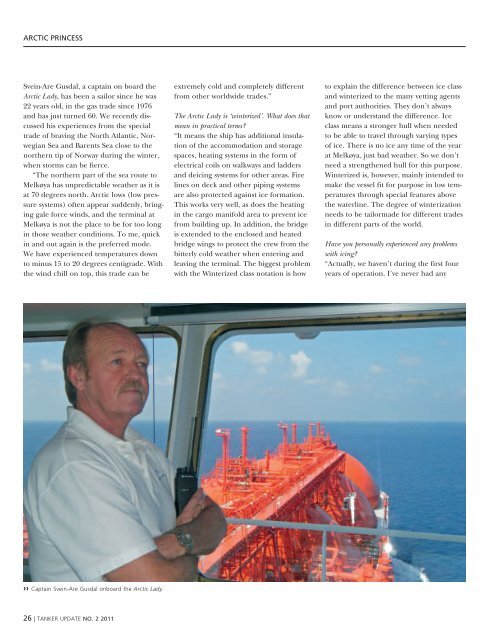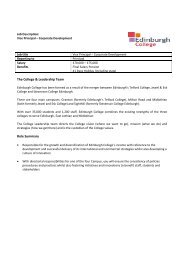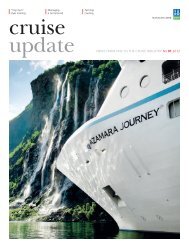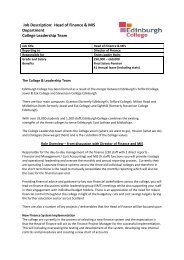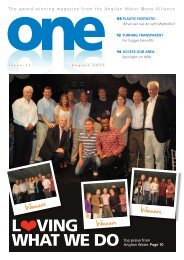update NewS from dNv to the tANker INduStry No 02 2011 - Hays
update NewS from dNv to the tANker INduStry No 02 2011 - Hays
update NewS from dNv to the tANker INduStry No 02 2011 - Hays
Create successful ePaper yourself
Turn your PDF publications into a flip-book with our unique Google optimized e-Paper software.
Arctic PrincessSvein-Are Gusdal, a captain on board <strong>the</strong>Arctic Lady, has been a sailor since he was22 years old, in <strong>the</strong> gas trade since 1976and has just turned 60. We recently discussedhis experiences <strong>from</strong> <strong>the</strong> specialtrade of braving <strong>the</strong> <strong>No</strong>rth Atlantic, <strong>No</strong>rwegianSea and Barents Sea close <strong>to</strong> <strong>the</strong>nor<strong>the</strong>rn tip of <strong>No</strong>rway during <strong>the</strong> winter,when s<strong>to</strong>rms can be fierce.“The nor<strong>the</strong>rn part of <strong>the</strong> sea route <strong>to</strong>Melkøya has unpredictable wea<strong>the</strong>r as it isat 70 degrees north. Arctic lows (low pressuresystems) often appear suddenly, bringinggale force winds, and <strong>the</strong> terminal atMelkøya is not <strong>the</strong> place <strong>to</strong> be for <strong>to</strong>o longin those wea<strong>the</strong>r conditions. To me, quickin and out again is <strong>the</strong> preferred mode.We have experienced temperatures down<strong>to</strong> minus 15 <strong>to</strong> 20 degrees centigrade. With<strong>the</strong> wind chill on <strong>to</strong>p, this trade can beextremely cold and completely different<strong>from</strong> o<strong>the</strong>r worldwide trades.”The Arctic Lady is ‘winterized’. What does thatmean in practical terms?“It means <strong>the</strong> ship has additional insulationof <strong>the</strong> accommodation and s<strong>to</strong>ragespaces, heating systems in <strong>the</strong> form ofelectrical coils on walkways and laddersand deicing systems for o<strong>the</strong>r areas. Firelines on deck and o<strong>the</strong>r piping systemsare also protected against ice formation.This works very well, as does <strong>the</strong> heatingin <strong>the</strong> cargo manifold area <strong>to</strong> prevent ice<strong>from</strong> building up. In addition, <strong>the</strong> bridgeis extended <strong>to</strong> <strong>the</strong> enclosed and heatedbridge wings <strong>to</strong> protect <strong>the</strong> crew <strong>from</strong> <strong>the</strong>bitterly cold wea<strong>the</strong>r when entering andleaving <strong>the</strong> terminal. The biggest problemwith <strong>the</strong> Winterized class notation is how<strong>to</strong> explain <strong>the</strong> difference between ice classand winterized <strong>to</strong> <strong>the</strong> many vetting agentsand port authorities. They don’t alwaysknow or understand <strong>the</strong> difference. Iceclass means a stronger hull when needed<strong>to</strong> be able <strong>to</strong> travel through varying typesof ice. There is no ice any time of <strong>the</strong> yearat Melkøya, just bad wea<strong>the</strong>r. So we don’tneed a streng<strong>the</strong>ned hull for this purpose.Winterized is, however, mainly intended <strong>to</strong>make <strong>the</strong> vessel fit for purpose in low temperaturesthrough special features above<strong>the</strong> waterline. The degree of winterizationneeds <strong>to</strong> be tailormade for different tradesin different parts of <strong>the</strong> world.Have you personally experienced any problemswith icing?“Actually, we haven’t during <strong>the</strong> first fouryears of operation. I’ve never had any›› Captain Svein-Are Gusdal onboard <strong>the</strong> Arctic Lady.26 | Tanker UPDATE NO. 2 <strong>2011</strong>


